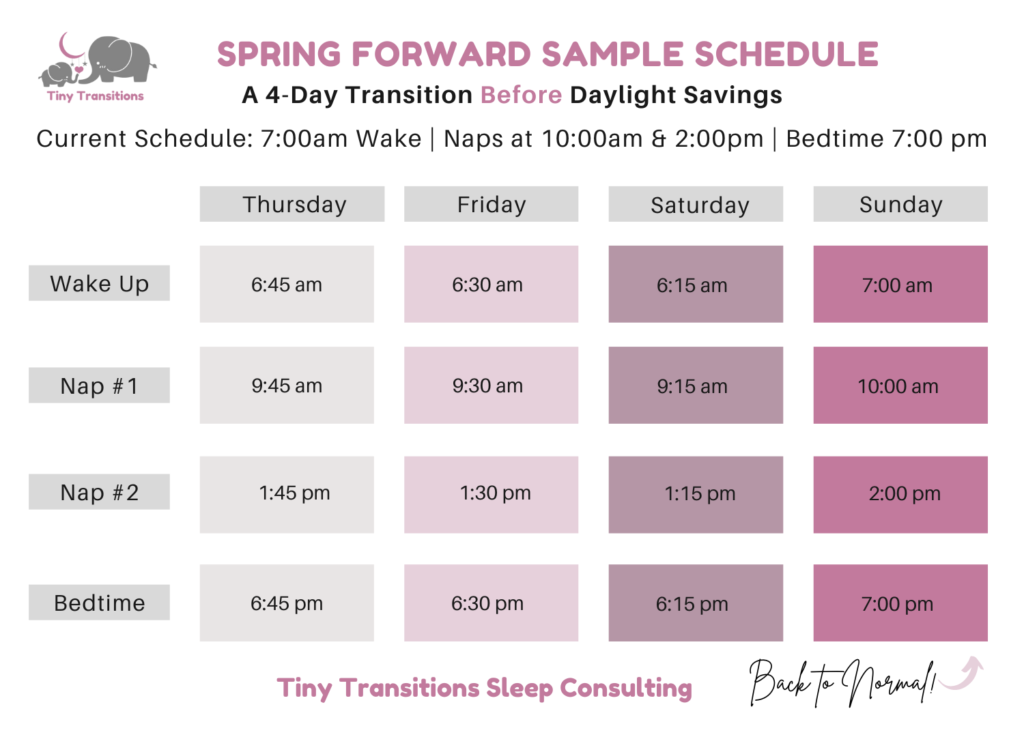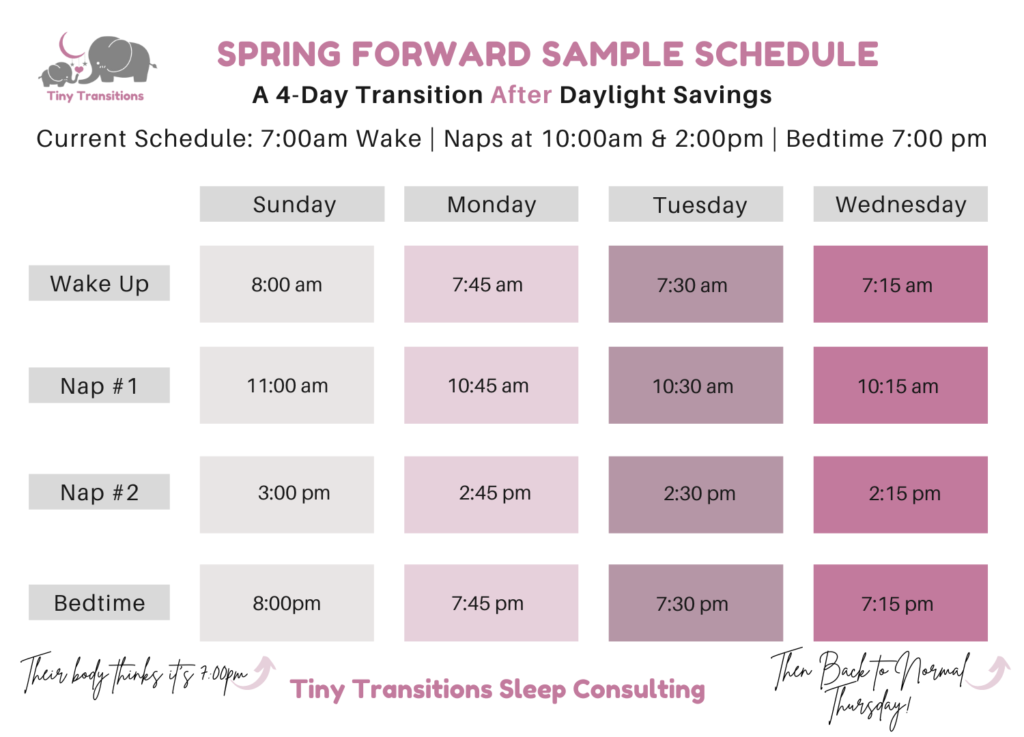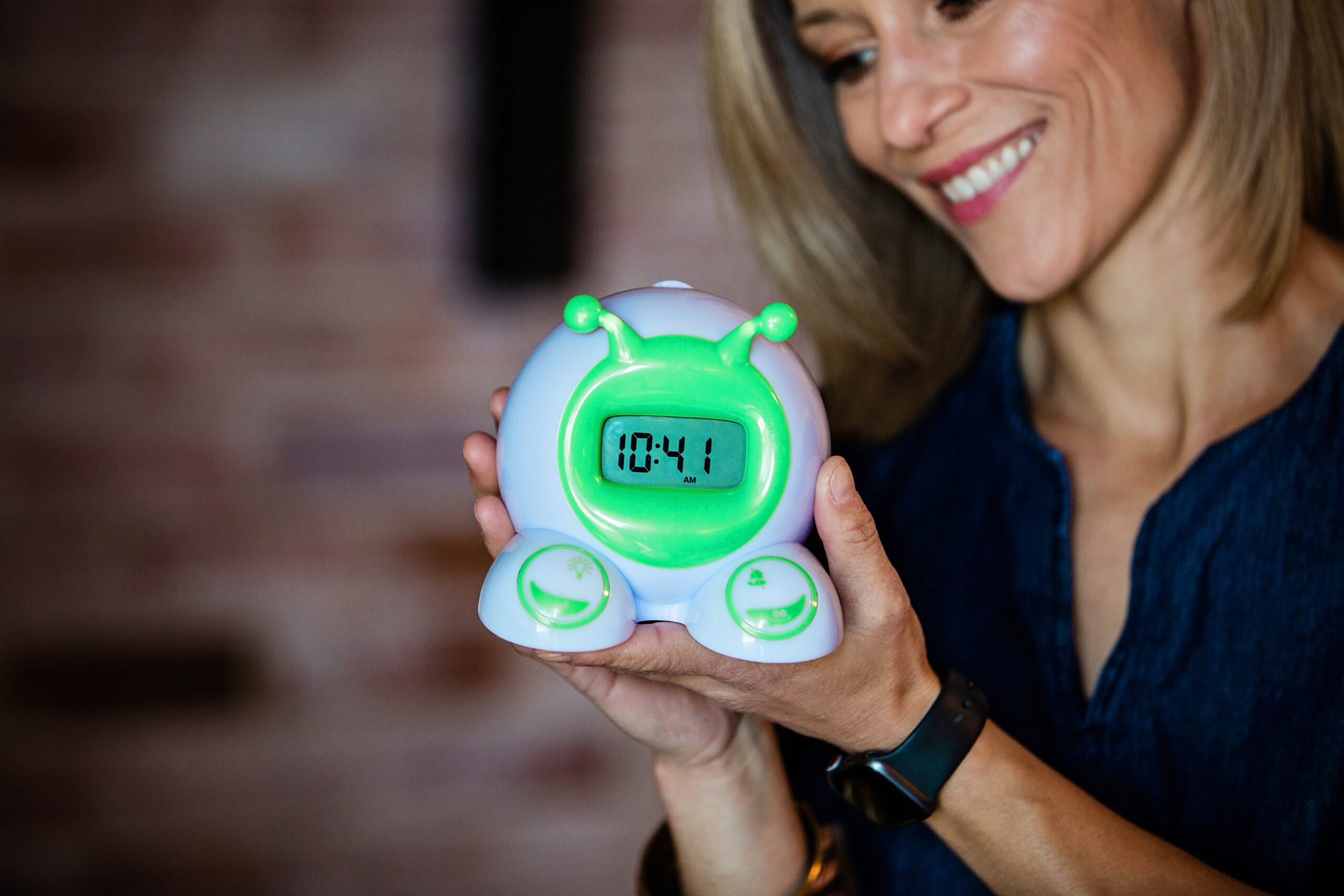Daylight Savings time on Sunday, March 10th, 2024, here in the United States or March 31st for most of Europe. As I hold out hope here in the U.S. for the Sunshine Protection act to keep things going this way, we can prepare you for this transition of gaining an hour of sunlight each day {plus get rid of that early morning riser in your house}.
As the clocks spring forward and the days get longer, Daylight Savings Time can challenge moms and dads. With the hour time change comes an adjustment in sleep schedules that can be difficult to manage. However, with some preparation and planning ahead of time, you can make the transition smoother for both yourself and your baby. Here are some tips to help you navigate Daylight Savings Time with an infant or toddler in your home.
While the arrival of daylight-saving time can be a challenge for parents, it is also a challenge for our kids. The time change can mess up their regular sleep schedules and internal body clock, which regulate by light. However, with the proper steps, we can help them adjust quickly and easily spring forward without disruption!
How Do I Adjust a Newborn for Daylight Savings Time?
Thankfully, if you have a baby younger than three months old, you should be all set regarding the time change. Simply adjust to the new time on Sunday morning and balance their awake windows and naps from there. Remember, at this age, 45-60 minutes is about all the awake time they can handle.
How Do I adjust an Infant or Toddler for Daylight Savings Time?
You have two approaches to adjusting a child’s schedule when it’s spring forward. You are either on the team “start before daylight savings” or you are on the team “start after daylight savings”. Both options will take you about 4 days to execute, so you are either doing it over a weekend or during the weekdays, so take that into account when deciding which “team” you are going to be on.
My kids have playdates, activities, soccer, Irish Dance, and all the things… so for us, they are tired on the weekends, so we will likely start a few days before because that timing better aligns with prepping for heading back to school Monday am. Don’t worry; we have sample schedules to tackle daylight savings for both ways.
Start the Week Before Spring Forward Daylight Savings:
1. Gradually adjust your child’s bedtime on the Thursday before daylight savings. You will make a small adjustment of 15 minutes each day, for a few days, then Sunday, you ‘back to normal’ once the clocks spring ahead. Here is a sample schedule for spring-forward daylight savings, using a 2-nap example.

Start the Day of Spring Forward Daylight Savings:
1. Gradually adjust your child’s bedtime on the Monday after {or the day of if they happen to be up early} daylight savings. You will make a small adjustment of 15 minutes each day for a few days; then Thursday, you will be ‘back to normal’ once the clocks spring ahead. Here is a sample schedule for spring-forward daylight savings, starting the day of, using a 2-nap example.

How can I help my baby adjust to spring forward?
Here are a few additional tips from Erin Forish, a Certified Sleep Consultant from Philadelphia, PA on the Tiny Transitions Team:
- Keep a consistent sleep schedule: Try to maintain a consistent sleep schedule for your child, even during daylight savings. Keeping a consistent sleep schedule and bedtime routine can help your child’s body adjust to the time change more easily.
- Create a sleep-conducive environment: Make sure your child’s sleep environment is dark, calm, and quiet. We love OtterSpace for this time of year, they are such a game changer, travel well, and are simple to set up!
- Limit screen time: Avoid exposing your child to screens such as smartphones, tablets, and TVs at least an hour before bedtime. The blue light from screens can interfere with sleep and make it harder for your child to fall asleep.
- Stay patient and flexible: It may take a few days for your child to adjust to the time change. Consistency with sleep and schedules is your best friend.
How long does it take babies to adjust to daylight savings?
The adjustment to daylight savings, with consistency in schedule and routine, should not be more than 1 week of time. If you follow these schedules, kids bounce back to normal even sooner. Remember to ensure you are looking at total sleep needs by age. Be careful to not introduce new habits into the mix that kids then start to expect, and ensure your little one isn’t getting overtired, which can also derail sleep and cause early morning wakings.
As you navigate the Daylight Savings time change with your baby or infant, remember that they are relying on you to guide them through consistent routines and support. We understand that the transition can be difficult, and we want to help. If you need additional resources or advice, please feel free to contact our team for a complimentary sleep assessment. With our help, you and your baby can find the right balance and make the most of Daylight Savings time. Also, check out the largest free sleep training education here!


